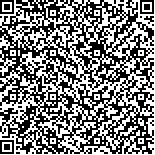本文已被:浏览 1860次 下载 2794次
Received:April 25, 2019 Revised:May 21, 2019
Received:April 25, 2019 Revised:May 21, 2019
中文摘要: 为解决旅游文本在特征表示时的一词多义问题, 针对旅游游记文本景点实体识别中景点别名的问题, 研究了一种融合语言模型的中文景点实体识别模型. 首先使用BERT语言模型进行文本特征提取获取字粒度向量矩阵, BiLSTM用于上下文信息的提取, 同时结合CRF模型提取全局最优序列, 最终得到景点命名实体. 实验表明, 提出的模型性能提升显著, 在实际旅游领域内景点识别的测试中, 与以往研究者方法比较下准确率, 召回率分别提升了8.33%, 1.71%.
Abstract:To solve the polysemy troublesome problem of tourism text in feature extraction, a Chinese scenic spot named entity recognition model based on fusion language model is studied for the problem of attraction alias in the visual recognition of tourist travel texts. Firstly, the BERT is used for tourism text feature extraction to obtain the word granularity vector matrix. BiLSTM is used to extract the context information. The CRF is used to obtain the global optimal sequence, and finally the tourist attraction entity is obtained. Experiments show that the performance of the proposed model is significantly improved. In the test of scenic spot identification in the actual tourism field, compared with the previous research, precision and recall rates are increased by 8.33% and 1.71%, respectively.
文章编号: 中图分类号: 文献标志码:
基金项目:国家重点研发计划(2018 YFC0807806); 中国物流学会项目 (2018CSLKT3-184)
引用文本:
赵平,孙连英,万莹,葛娜.基于BERT+BiLSTM+CRF的中文景点命名实体识别.计算机系统应用,2020,29(6):169-174
ZHAO Ping,SUN Lian-Ying,WAN Ying,GE Na.Chinese Scenic Spot Named Entity Recognition Based on BERT+BiLSTM+CRF.COMPUTER SYSTEMS APPLICATIONS,2020,29(6):169-174
赵平,孙连英,万莹,葛娜.基于BERT+BiLSTM+CRF的中文景点命名实体识别.计算机系统应用,2020,29(6):169-174
ZHAO Ping,SUN Lian-Ying,WAN Ying,GE Na.Chinese Scenic Spot Named Entity Recognition Based on BERT+BiLSTM+CRF.COMPUTER SYSTEMS APPLICATIONS,2020,29(6):169-174


